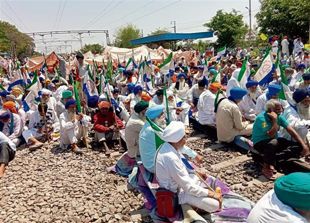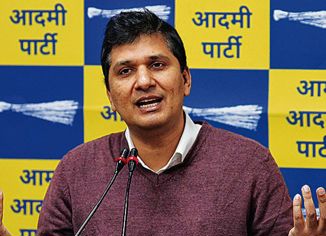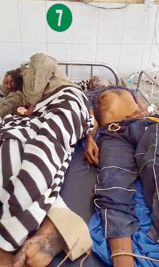Gaurav Kanthwal
In simpler terms, The Architecture of Loss is a story of a mother's troubled relationship with her daughter. It is a novel in which a variety of human emotions — tenderness, affection, bitterness, anger, fury, forgiveness and reconcilliation — play out their part to complete a family story. On a bigger plane, it is a breaking of personal bonds in times of collective crisis. Zainab Priya Dala's second novel is a significant addition to the growing list of post-apartheid literature in South Africa.
It tells a story of a former doctor, Sylverani 'Sylvie' Pillay, one of the very few coloured women admitted to the medical programme at Natal Medical College. She is suffering from cancer and spending her twilight years in a fictional place in Brighton in rural Zululand.
Her daughter Afroze Bhana (42), visits her when she comes to know about her mother’s condition. Far from being a happy reunion, there is unease and tension in the air when the two meet. It is only a matter of time that bitterness spills over and barbs fly thick and fast.
Though the architect daughter has briefly come from Cape Town to comfort her ailing mother, she can't forget and overcome the fact that how Sylvie had callously given the six-year-old Afroze away to her estranged husband. Afroze, obviously, does not know the circumstances under which her mother had taken this extreme step.
Sylvie, an anti-apartheid activist, is somewhat disgruntled with her past. She feels the movement did start as a great movement but ended up marginalising its own activists. The reunion brings back decades-old memories, mostly bitter, throwing up in vivid detail the circumstances which led to a wedge between the mother and daughter.
These passages highlight the richness of Dala's experiences and her craft in putting these into words. The book is divided into three parts: the mother-daughter relationship; Sylvie's struggle against apartheid, and a happy reunion after resolution of issues between the two.
Dala's 247-page lyrical narrative is women-centric, and understandably, female characters are much stronger than the male ones. The pattern is discernible. Every male character in the novel has a serious flaw, almost a detestable one, but there is a desirable attribute as well which keeps the women hooked on to them.
It is in embellishing her female characters, Dala lays out the good, bad, and ugly of South African way of life. “The divide between men and women in the (anti-aparthied) struggle made us unhappy in our conjoined twinness. It became a silent code. Yet, another code that we had to learn… But men were the self-proclaimed owners of the struggle.In other words, the struggle was sexist,” Sylvie recounts her days during the Black Consciousness Movement.
South African Literature is known for a heady concoction of social realism as well as magic realism that often keeps the reader in a trance. The Architecture of Loss is no different. It borrows heavily from the author's conversations with an anti-apartheid activist in an old-age home. Dala met her during her psychiatry practice and was later charged with professional misconduct-there is a six page note in the end. In 2015, the Durban-based author drew the ire of Muslim community in South Africa for supporting Salman Rushdie at a literary event. Now, Rushdie has reciprocated with a blurb on the top of the book cover.
It is rightly said that history marginalises whereas fiction includes its subjects. Sylvie's lifelong discontent with the African National Congress's struggle was that she gave up everything, including her child, but her sacrifice was not even acknowledged anywhere, not even within the organisation.
Dala's biggest achievement in the novel is giving a convincing account of a South African-Indian woman in the turbulent phase of the 1970s and 1980s in South Africa.



























